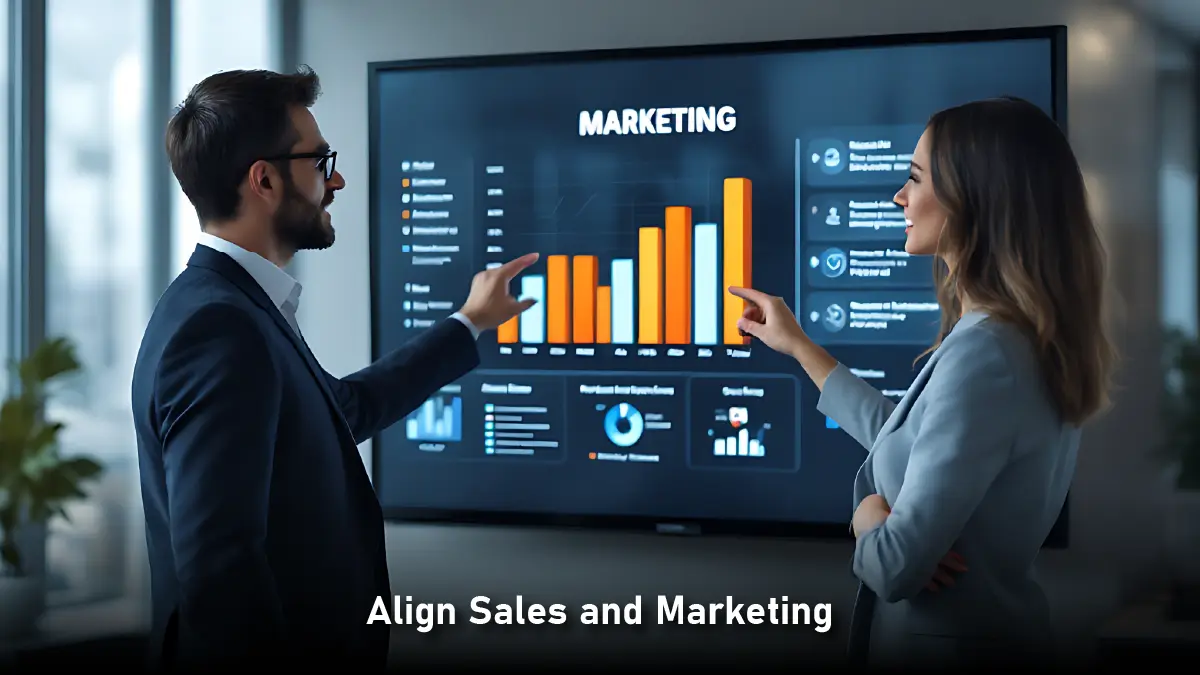In the quick-moving world of marketing tech, creating a sales funnel is both art and science. It turns prospects into loyal customers. Martech leaders face a challenge. They must not only use the latest tools but also create a smooth journey for buyers. This journey needs to match what today’s buyers expect. A high-converting sales funnel focuses on value, not just selling products. It builds relationships and guides decisions carefully at each step. Here’s how to build one from the ground up.
Understand Your Audience
Every successful sales funnel begins with a deep understanding of your target audience. If you don’t know your buyers, what they need, and how they act, even the best Martech stack won’t work well. Start by developing detailed buyer personas. Go beyond demographics; dive into pain points, motivations, and decision-making triggers. A SaaS company that targets large clients may notice that buyers value scalability and integration more than price. A B2B analytics platform might find that mid-market clients prefer easy use and strong customer support.
Conduct surveys, analyze customer data, and listen to online conversations to spot patterns. Tools like CRM platforms, heatmaps, and chatbots let you see how users behave in real time. Don’t assume anything – verify each idea with data instead. If more people are signing up for webinars than reading blog posts, change your plan.
Map the Buyer’s Journey
A sales funnel mirrors the buyer’s journey; awareness, consideration, and decision. Each stage demands tailored content and engagement strategies.
Awareness Stage: At this point, people see they’ve got a problem but aren’t looking for answers just yet. Your focus is to educate, not make a sale. Make content for the top of the funnel. This includes blog posts, infographics, and social media updates. Focus on everyday problems. A cybersecurity firm could publish a report called ‘Phishing Attacks Are Getting Smarter: What You Need to Know.’
Consideration Stage: Prospects are now evaluating solutions. Offer middle-of-funnel (MOFU) assets such as case studies, comparison guides, or live demos. Webinars are great for this. Invite industry experts to share best practices. This positions your brand as a thought leader. A CRM platform might offer a session called ‘How to Reduce Churn with Predictive Analytics.’ This would highlight its own features in a clever way.
Decision Stage: At this critical point, prospects need reassurance. Bottom-of-funnel (BOFU) content, such as free trials, ROI calculators, and personalized consultations, can make a big difference. Highlight social proof; client testimonials, G2 reviews, or success stories from recognizable brands. A marketing automation tool might show a case study. In it, a client saw a 300% rise in lead generation by using their platform.
Also Read: Precision Marketing in B2B SaaS: Winning the Right Customers at the Right Time
Leverage Automation Without Losing the Human Touch

Martech thrives on automation, but over-automation can alienate buyers. Striking the right balance is key. Use tools like email workflows, chatbots, and dynamic content. These help you provide personalized experiences on a large scale. A prospect who downloads the e-book ‘AI in Customer Service’ might get a follow-up email series. This series will share use cases and then invite them to a demo.
However, avoid robotic interactions. Include personal touches, such as video messages from sales reps. Also, host live Q&A sessions and create community forums for users to share their experiences. Drift’s conversational marketing platform combines chatbots with quick access to human agents. This setup reduces friction during important moments.
Optimize for Conversion
Even the best-designed funnels require continuous optimization. A/B test landing pages, CTAs, and email subject lines to identify what resonates. For example, changing a CTA from ‘Request a Demo’ to ‘See How It Works’ might boost click-through rates by 20%. Use heatmaps to study user behavior. If visitors leave a pricing page in 10 seconds, think about simplifying the layout. You could also add a tooltip that explains the cost structure.
Monitor metrics like conversion rates, bounce rates, and time-to-close. Tools like Google Analytics, HubSpot, or Hotjar provide actionable insights. But don’t overlook qualitative feedback. Send post-purchase surveys asking, ‘What almost stopped you from buying?’ or interview lost leads to uncover hidden objections.
Align Sales and Marketing

A high-converting funnel requires seamless collaboration between sales and marketing teams. Misalignment is expensive. HubSpot says that companies with good sales and marketing teamwork make 208% more revenue from marketing. Establish shared KPIs, such as lead quality or pipeline velocity, to foster accountability.
Create a service-level agreement (SLA). Marketing will provide a set number of qualified leads each month. Sales will then follow up within a specific timeframe. Use shared platforms like Salesforce or Slack to ensure transparency. Regular strategy sessions can fill gaps. For instance, if sales hear that prospects often ask about integration, then marketing can create a resource page on it.
Scale with Paid Advertising
Paid ads amplify funnel performance, but only when targeted strategically. Focus on account-based marketing (ABM) to reach high-value accounts. Avoid trying to reach everyone. Platforms like LinkedIn Ads and Terminus let you reach decision-makers with customized messages. A Martech company selling AI analytics could target CMOs in healthcare. The ads would focus on compliance and predictive insights.
Retargeting is equally powerful. Visitors who explored pricing but didn’t convert could see dynamic ads showcasing a limited-time discount or a customer testimonial. Tools like AdRoll or Facebook Pixel enable granular audience segmentation, ensuring your budget isn’t wasted on cold leads.
Measure Success Beyond the Close
A funnel shouldn’t end at the sale. Retention and advocacy are where lifetime value multiplies. Use onboarding emails, knowledge bases, and check-in calls to ensure customers achieve quick wins. A project management software company might send a ’30-Day Success Plan’ with tips for maximizing features.
Turn satisfied customers into advocates with referral programs or exclusive community access. Dropbox’s referral strategy, which rewarded users with extra storage for inviting friends, drove a 60% increase in sign-ups. Encourage reviews and case studies—social proof fuels future conversions.
Adaptability Is the Ultimate Competitive Edge
The digital landscape shifts daily. Algorithms change, buyer preferences evolve, and new competitors emerge. Martech leaders must build funnels that adapt. Regularly audit your strategy, experiment with emerging channels like AI chatbots or interactive video, and stay attuned to feedback.
A sales funnel that really works isn’t a one-and-done deal – it’s a dynamic system. To be effective, blend data insights with a strong understanding of your customers. Be ready to adapt. This way, you’ll meet your revenue goals and prepare for long-term growth, no matter what the market brings. Now it’s time to build a funnel that doesn’t just get the job done – it wows your customers and keeps them coming back.


Comments are closed.